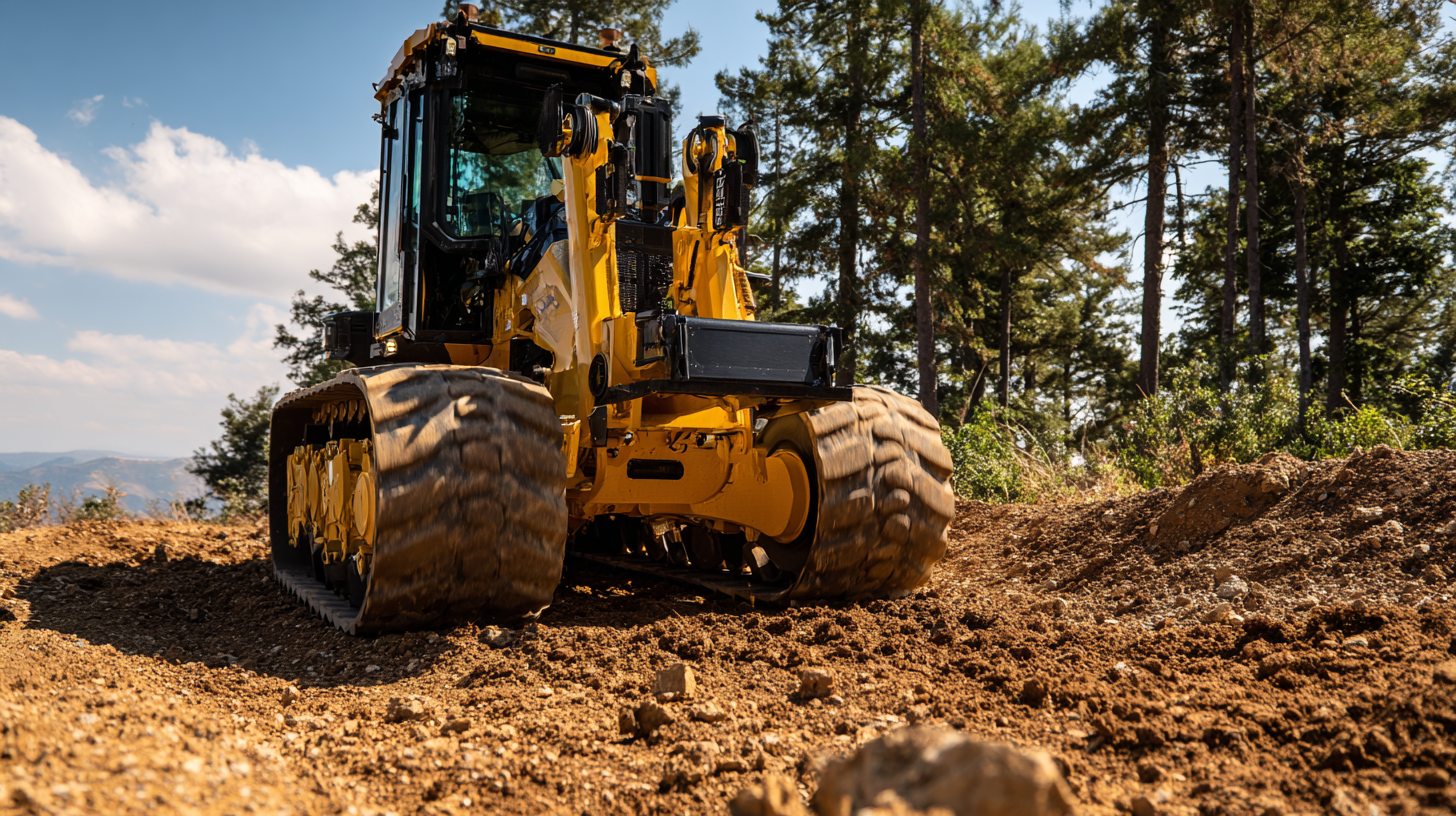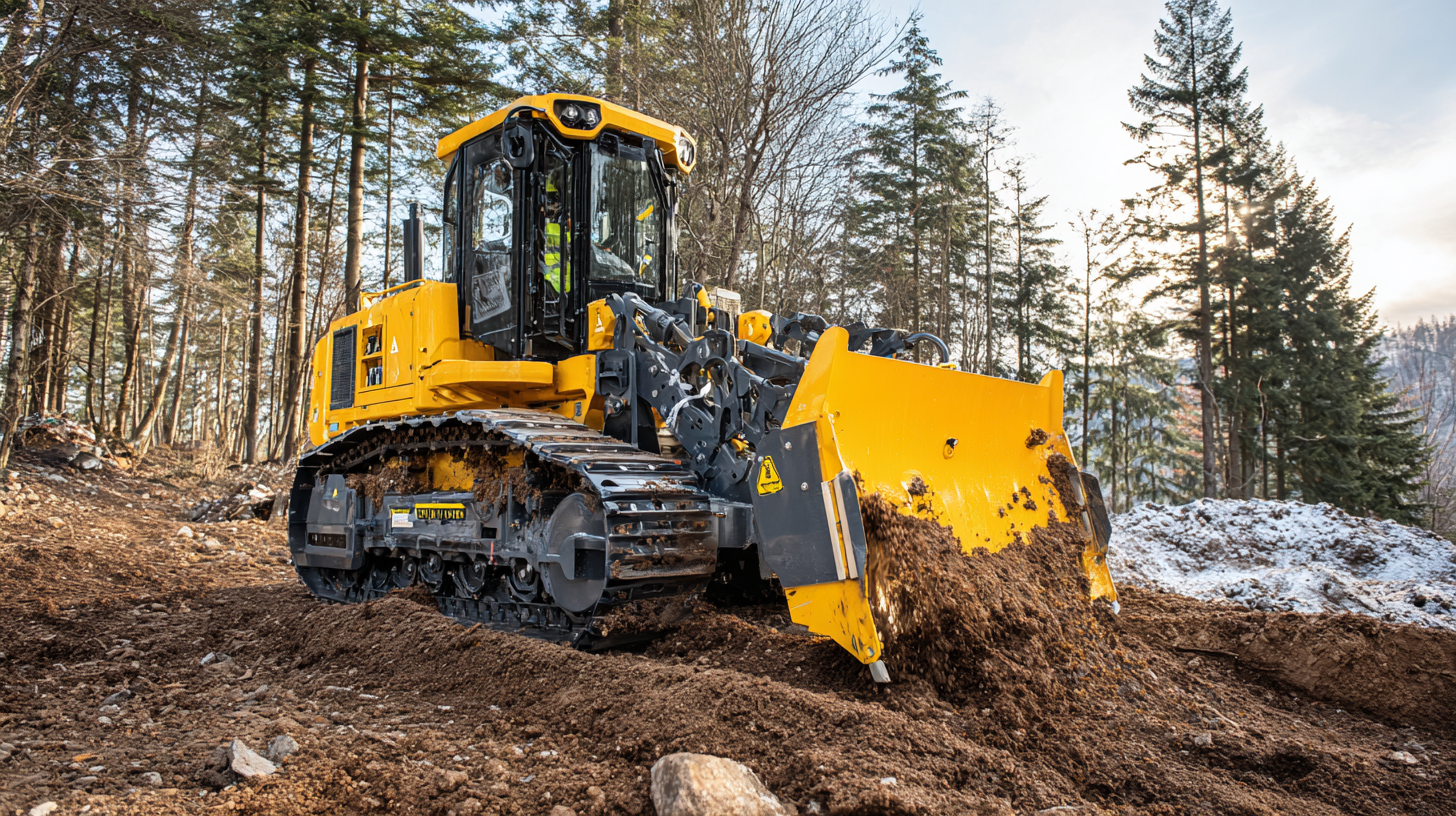 +86 13794985240
+86 13794985240
Leave Your Message
-
 CONTACT NUMBER
CONTACT NUMBER -
 CONTACT NUMBER
CONTACT NUMBER -
 CONTACT NUMBER
CONTACT NUMBER



In the construction and civil engineering industries, the selection of the right equipment is crucial for project efficiency and success. Among these essential tools is the Vibrating Compactor Rammer, which plays a pivotal role in soil compaction, ensuring stability and durability of foundations. According to recent industry reports, improper compaction techniques can lead to significant structural failures, costing projects as much as 30% of their budget in rework and delays. Therefore, choosing the best Vibrating Compactor Rammer tailored to specific project needs is not just an operational decision but a strategic one that directly impacts project outcomes. Factors like compactor weight, frequency, and power are critical, as they determine the effectiveness of soil densification in various applications, from foundations to backfilling. This blog will explore the top strategies for selecting the most suitable Vibrating Compactor Rammer to enhance the quality and longevity of your construction projects.

 When selecting the right vibrating compactor rammer for your construction needs, it’s essential to consider several key factors that can significantly impact your project’s efficiency and outcome. Firstly, the weight of the rammer is crucial; heavier rammers tend to provide greater compaction depth, making them ideal for heavy-duty tasks. However, if you’re working on compacting finer materials or in tight spaces, a lighter model might be more suitable.
When selecting the right vibrating compactor rammer for your construction needs, it’s essential to consider several key factors that can significantly impact your project’s efficiency and outcome. Firstly, the weight of the rammer is crucial; heavier rammers tend to provide greater compaction depth, making them ideal for heavy-duty tasks. However, if you’re working on compacting finer materials or in tight spaces, a lighter model might be more suitable.
Another important factor is the engine type and power output. Rammers with a more powerful engine can handle tougher soil conditions and reduce the amount of time spent on compaction. Additionally, assessing the ease of operation and maintenance of the rammer is vital. Look for models equipped with user-friendly controls and features that facilitate quick maintenance. Finally, consider the manufacturer’s reputation and warranty offerings, as these can provide insights into the reliability and longevity of the equipment. Making informed decisions based on these factors will ensure that you select a rammer that aligns perfectly with your project requirements.
When selecting a vibrating compactor rammer for your project, it's crucial to understand the different types available and their specific applications in varying soil conditions. There are mainly three types of rammers: petrol, electric, and compressed air-driven. Each type has unique advantages—the petrol rammers are often preferred for remote job sites due to their mobility, while electric rammers are suitable for indoor projects due to lower emissions and noise levels. According to the National Asphalt Pavement Association, choosing the right type of rammer can significantly impact compaction efficiency, yielding a material density improvement of up to 15% in cohesive soils.
Soil conditions play a pivotal role in determining the appropriate compactor for a task. For instance, clay soils require a heavier rammer to effectively penetrate and compact, whereas sandy soils may benefit from lighter models that provide greater maneuverability. The American Society of Civil Engineers recommends using a rammer with a minimum centrifugal force of 6500 lbf for optimal compaction in dense clay. Moreover, adaptations in rammer design, such as foot shape and size, can enhance performance by ensuring better contact with the ground, allowing for more effective soil displacement and compaction in diverse landscapes.
When selecting the ideal vibrating compactor rammer for your construction project, focusing on key specifications such as engine power, weight, and compaction force is essential. Engine power directly influences the efficiency and performance of the rammer. A more powerful engine can handle tougher surfaces and larger areas, reducing the time required to achieve desired compaction levels. Look for a rammer with sufficient horsepower that aligns with your project's demands to ensure optimal performance.
Weight is another crucial factor to consider. Heavier rammers typically provide better compaction due to their increased mass, which aids in driving the machine down into the soil. However, balance is key; an excessively heavy rammer may be difficult to maneuver, especially on tight job sites. Find a model that strikes the right balance between weight and ease of use while catering to your site's requirements.
Lastly, compaction force is fundamental in determining how well the rammer will perform. This force is typically measured in pounds per square foot and indicates how effectively the machine can compact different types of soil. Choose a compactor with an appropriate compaction force for the material you’ll be working with. Ensuring that your chosen rammer meets these specifications will lead to a more efficient and successful compaction process for your project.
| Model | Engine Power (HP) | Weight (lbs) | Compaction Force (lbs) |
|---|---|---|---|
| Model A | 5.5 | 90 | 3,500 |
| Model B | 6.0 | 85 | 3,800 |
| Model C | 4.5 | 100 | 3,200 |
| Model D | 7.0 | 95 | 4,000 |
| Model E | 5.0 | 98 | 3,600 |
When selecting the best vibrating compactor rammer for your project, conducting a comparative analysis of industry-approved brands and models is essential for optimizing performance. According to a report from the Construction Equipment Industry Association (CEIA), the efficiency of rammers can vary significantly based on their design and technical specifications, with top-performing models achieving up to 25% greater compaction efficiency. Brands such as Wacker Neuson and Honda consistently rank high in this category, owing to their innovative engineering and robust build quality, which not only enhances performance but also contributes to durability and reliability.
Additionally, the Power Equipment Manufacturers Association (PEMA) highlights the importance of maintenance features in the selection process. Models that incorporate user-friendly maintenance capabilities, such as those from Atlas Copco, not only extend the lifespan of the equipment but also reduce downtime. This is particularly crucial for large-scale projects where time is of the essence. As indicated by the market analysis, investing in rammers equipped with advanced vibration technology can lead to superior soil density results, crucial for foundational work. Thus, comparing these leading brands and their respective models provides valuable insights into maximizing project efficiency and effectiveness.
When selecting the best vibrating compactor rammer for your project, it's essential to strike a balance between initial investment and long-term benefits. Analyzing cost-effectiveness plays a critical role, especially in the construction industry where budget constraints and project timelines often dictate decision-making. The initial purchase might seem considerable, but it’s vital to consider the efficiency and reliability of a higher-quality rammer. Investing in a more robust machine can lead to reduced operational costs, fewer maintenance issues, and ultimately, a better return on your investment.

Drawing parallels from a recent techno-economic analysis of solar-powered microgrids for rural electrification, one can see the importance of evaluating not just immediate expenses but potential long-term benefits. Just as sustainable energy solutions can provide enduring advantages for communities, choosing the right equipment can significantly enhance project outcomes. By prioritizing durability and performance, contractors can minimize downtime and maximize productivity, much like embracing energy-efficient practices that lead to substantial cost savings and environmental benefits in construction.
